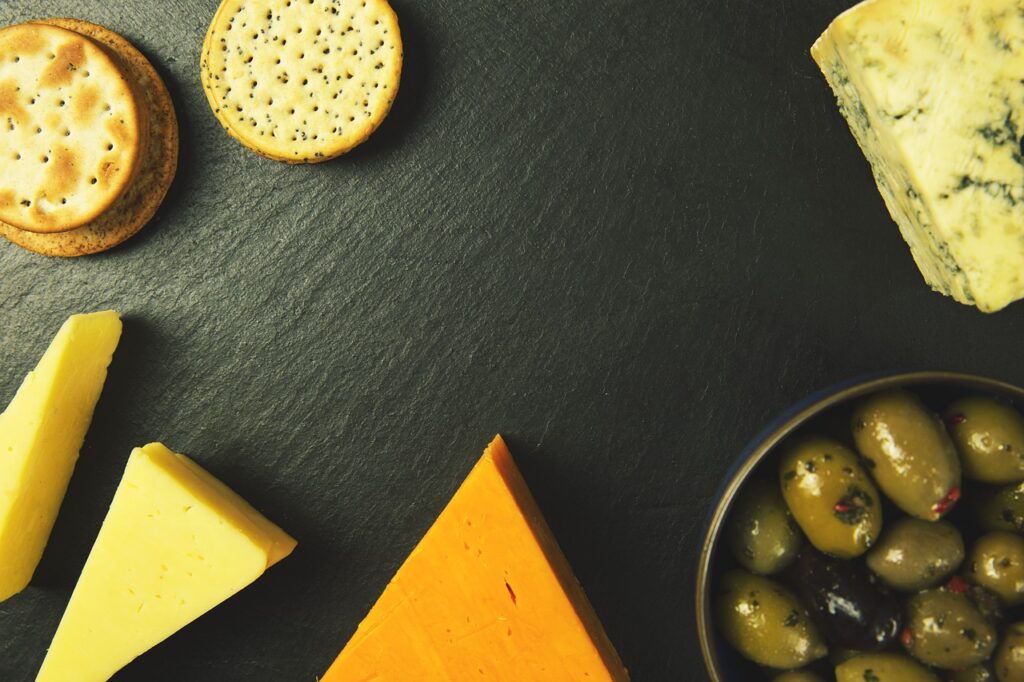The Art and Science of Cheese: A Journey Through Tradition and Taste
Cheese, a culinary marvel that has graced tables for millennia, continues to captivate food lovers around the world. From the rolling hills of Tuscany to the lush pastures of Normandy, cheese-making is an art form steeped in tradition, yet continuously evolving. In this post, we’ll explore the rich world of cheese, focusing on its history, nutritional benefits, and the unparalleled contributions of Italian and French cheese-making traditions.
The History of Cheese
The origins of cheese date back over 7,000 years, with evidence suggesting that it was first made in the Middle East. What began as a method of preserving milk quickly became a culinary staple across cultures. Each region developed its own unique cheeses, influenced by local climates, available milk sources, and cultural preferences.
Cheese-Making Process
At its core, cheese-making involves a few key steps:
- Curdling: Milk is treated with rennet or acid to separate curds from whey.
- Cutting and Heating: The curds are cut and often heated to release more whey.
- Draining and Shaping: Excess whey is drained, and the curds are shaped.
- Salting: Salt is added for flavor and preservation.
- Aging: Many cheeses are aged to develop flavor and texture.
The complexity and variation in these steps lead to the vast array of cheeses we enjoy today.
Nutritional Aspects of Cheese
Cheese is not just delicious; it’s also packed with nutrients:
- Protein: Cheese is an excellent source of high-quality protein, essential for muscle health and overall body function.
- Calcium: Vital for bone health, cheese is one of the best dietary sources of calcium.
- Vitamin B12: Important for red blood cell formation and neurological function, B12 is abundant in many cheeses.
- Phosphorus: Works with calcium to build strong bones and teeth.
- Zinc: Supports immune function and wound healing.
- Vitamin A: Important for vision, immune function, and skin health.
- Conjugated Linoleic Acid (CLA): Found particularly in cheeses from grass-fed animals, CLA has been linked to various health benefits.
While cheese is nutrient-dense, it’s also high in calories and saturated fat. Moderation is key, especially for those watching their calorie or fat intake.
Italian Cheese Traditions
Italy boasts over 400 distinct types of cheese, each reflecting the unique terroir of its region:
- Parmigiano-Reggiano: Often called the “King of Cheeses,” this hard, granular cheese has been made in the same way since the 13th century in specific provinces of Italy.
- Mozzarella di Bufala Campana: Made from the milk of water buffaloes, this PDO (Protected Designation of Origin) cheese is prized for its delicate flavor and stringy texture.
- Gorgonzola: This blue-veined cheese comes in two varieties – the milder, creamier Dolce and the stronger, firmer Piccante.
- Pecorino Romano: One of the world’s oldest recorded cheeses, this hard, salty cheese is made from sheep’s milk.
- Asiago: Varying from semi-soft to hard depending on aging, Asiago is versatile in both cooking and eating.
French Cheese Traditions
France is renowned for its cheese, with over 1,000 varieties:
- Camembert: This soft, creamy cow’s milk cheese has a bloomy rind and a rich, buttery flavor.
- Roquefort: One of the world’s best-known blue cheeses, Roquefort is made from sheep’s milk and aged in caves.
- Brie: Known as the “Queen of Cheeses,” Brie is soft and creamy with an edible rind.
- Comté: A hard cheese made from unpasteurized cow’s milk, Comté is the most consumed cheese in France.
- Chèvre: A term for various goat’s milk cheeses, ranging from soft and fresh to hard and aged.
The Concept of Terroir in Cheese-Making
Terroir, a term often associated with wine, is equally important in cheese-making. It encompasses the complete natural environment in which a particular cheese is produced, including factors like:
- Climate and microclimate
- Soil composition
- Native microflora
- Traditional production methods
These elements combine to give each cheese its unique character, making it a true reflection of its place of origin.
Pairing Cheese
The art of pairing cheese enhances the gastronomic experience:
- Wine: The classic pairing. Generally, white wines pair well with softer cheeses, while reds complement harder, aged varieties.
- Fruits: Fresh or dried fruits can balance the richness of cheese. Think pears with Gorgonzola or figs with Brie.
- Nuts: Walnuts, almonds, and pecans add texture and complement the flavors of many cheeses.
- Honey: A drizzle of honey can beautifully offset the saltiness of blue cheeses or the tanginess of goat cheeses.
- Charcuterie: Cured meats like prosciutto or salami create a harmonious flavor profile with various cheeses.
The Future of Cheese
While steeped in tradition, cheese-making continues to evolve:
- Artisanal Revival: There’s growing interest in small-batch, handcrafted cheeses made using traditional methods.
- Plant-Based Alternatives: To meet the demand of vegan and lactose-intolerant consumers, plant-based “cheeses” are becoming more sophisticated.
- Functional Cheeses: Some producers are experimenting with adding probiotics or other functional ingredients to cheese.
- Sustainable Production: There’s increasing focus on environmentally friendly cheese production methods and packaging.
Cheese is more than just a food; it’s a celebration of cultural heritage, craftsmanship, and the bounty of nature. From the sun-drenched hills of Italy to the verdant pastures of France, each cheese tells a story of its origin and the skilled hands that crafted it. As we continue to appreciate the rich traditions of cheese-making, we also look forward to innovations that will shape the future of this beloved food. Whether you’re a connoisseur or a casual enthusiast, the world of cheese offers endless opportunities for exploration and enjoyment.





